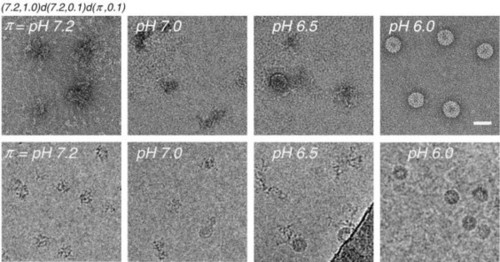I am not a fan of “Science By Hype”, which I think I have made abundantly clear via Virology News and elsewhere. Thus, I pour scorn on the “We found a structure which will lead to an AIDS vaccine”, and “We found an antibody that will cure AIDS” type of articles, WHILE at the same time, appreciating the ACTUAL science behind the hype.
If there is any, of course.
Which is why I am torn, on the subject of a giant DNA virus purportedly found in 30 000 year-old Siberian permafrost. I am also a fan of zombies, hence the title. But seriously, now: here we are, with news media and semi- and fully-serious science mags all hailing the description in PNAS, no less, of “Pithovirus sibericum“. A giant virus, wakened from a 30 000 year sleep in Siberian permafrost, by the kiss of an amoeba. OK, by infecting an amoeba, but you see where I’m going here.  So here we are, with an article from Sci.news.com, trumpeting the discovery. And there’s more:
So here we are, with an article from Sci.news.com, trumpeting the discovery. And there’s more:
“The findings have important implications in terms of public health risks related to the exploitation of mining and energy resources in circumpolar regions, which may arise as a result of global warming. “The re-emergence of viruses considered to be eradicated, such as smallpox, whose replication process is similar to Pithovirus, is no longer the domain of science fiction. The probability of this type of scenario needs to be estimated realistically.””
Yeah. Rii-ii-ght. Giant viruses are going to erupt from the permafrost and kill us all! Really??
No.
Curtis Suttle, he of oceanic metaviromes fame, is quoted as saying the following, in Ed Yong’s Nature blog:
“…people already inhale thousands of viruses every day, and swallow billions whenever they swim in the sea. The idea that melting ice would release harmful viruses, and that those viruses would circulate extensively enough to affect human health, “stretches scientific rationality to the breaking point”, he says. “I would be much more concerned about the hundreds of millions of people who will be displaced by rising sea levels.””
Amen! In other words, just because there ARE revivable viruses in permafrost – itself no new thing, BTW – does NOT mean they will harm humans. Think about this a moment: something locked away under the surface of the ground for 30 000+ years has to SURVIVE, first; second, it has to INFECT humans if it is to cause any harm. And what evidence do we have that anything found in Siberian permafrost can do that?
None. None whatsoever.
Think again: how many humans, and how many mammals with virus that could infect humans, were there around on the Siberian plains 30 000 years ago?
Precious few.
And what likelihood is there that any viruses that COULD infect humans, got preserved? Vanishingly small. So what COULD get released from said permafrost, as it melts with inexorable global warming? Well, phages: lots and lots of phages.
Then some plant viruses, maybe: there have been previous reports of Tomato mosaic virus found in 1999 in glacial ice from Greenland, that was between 500 – 140 000 years old – that was also supposed to be a threat, as it escaped from melting icecaps.
To tomatoes, possibly. If they grew in seawater.
But there’s more: here we have “New Deadly Flu Viruses Reemerge from Melting Ice“, from 2006. Here we have
“An international team [that] found flu viruses in the ice of Siberian lakes, fact that warns about the possibility that global warming may release germs locked in glaciers for decades or even centuries.”
Yah. Right. But at the same time, considerably more worthy of alarm than Pandoraviruses. Because what our worthy French colleagues did NOT do, in their report in PNAS, was see what ELSE was in their permafrost samples. Seriously: they trawled melting ice from a core sample with amoebae ONLY.
This is the equivalent of the 2nd year prac I used to do, when we made students screen water obtained from the environment with E coli to see if they could amplify coliphages out of it. Why did they not do a metagenomic sequence trawl, after filtering out bits of mammoth crap and cockroaches and bits of twigs?? What did they MISS? HBVs that infected Denisovans? And are we SURE that the virus came from that long ago? Has the ice really remained frozen all that time – and is there not the possibility that water didn’t percolate down through cracks and pores in the permafrost, carrying the virus with it, from a more clement environment on the surface??
OK, OK, so it’s a great find, and reasonably worthy of SOME hype. BUT: it is NOT a harbinger of doom, because most viruses will NOT survive 30 000 years worth of entombment in ice, and in any case, would NOT infect humans even if they did. AND I hate the name: “Pithovirus sibericum“? Really?? Viruses are not named like that! Except by French folk who find these strange “amphora-shaped” viruses, apparently.


